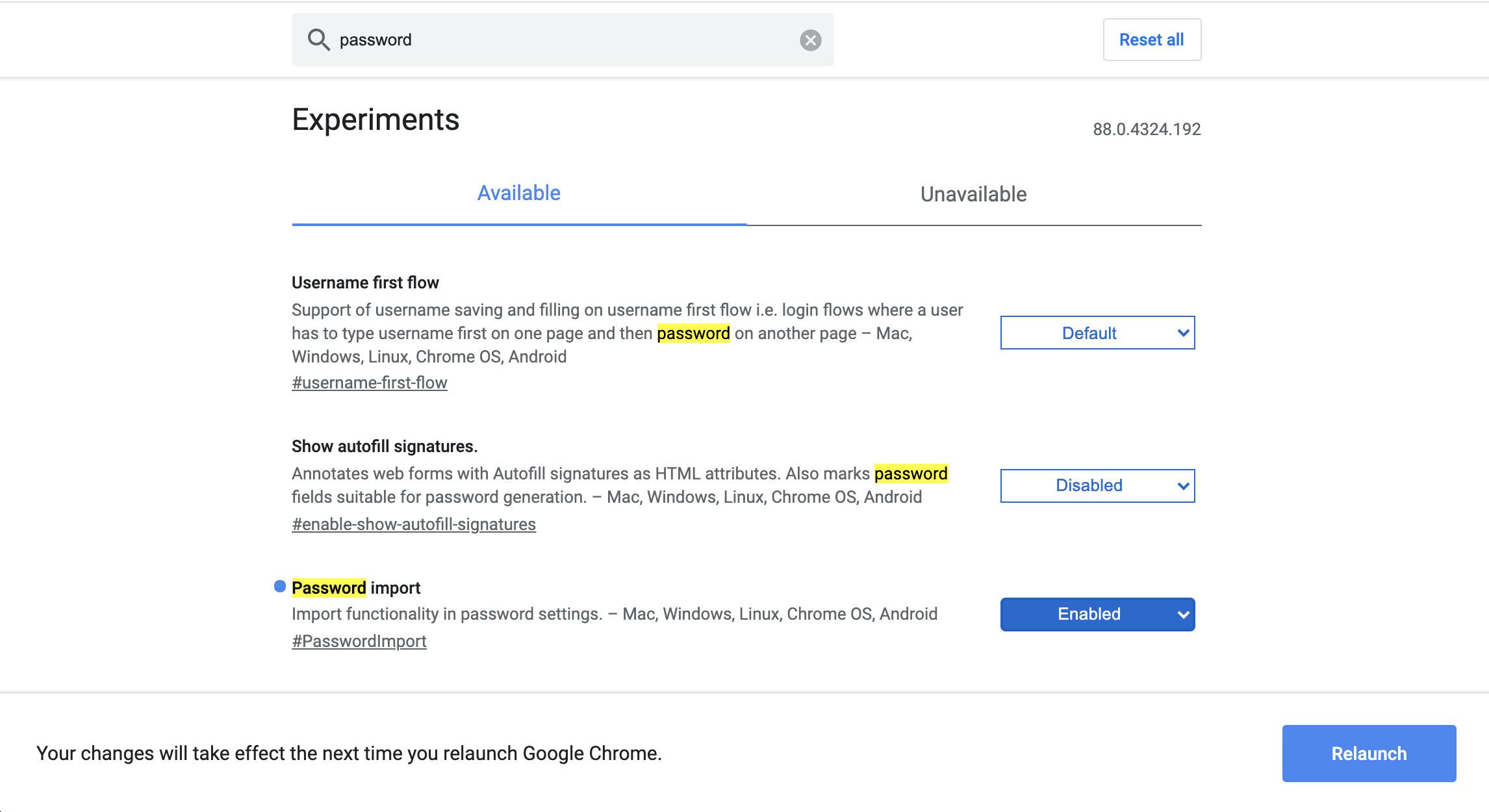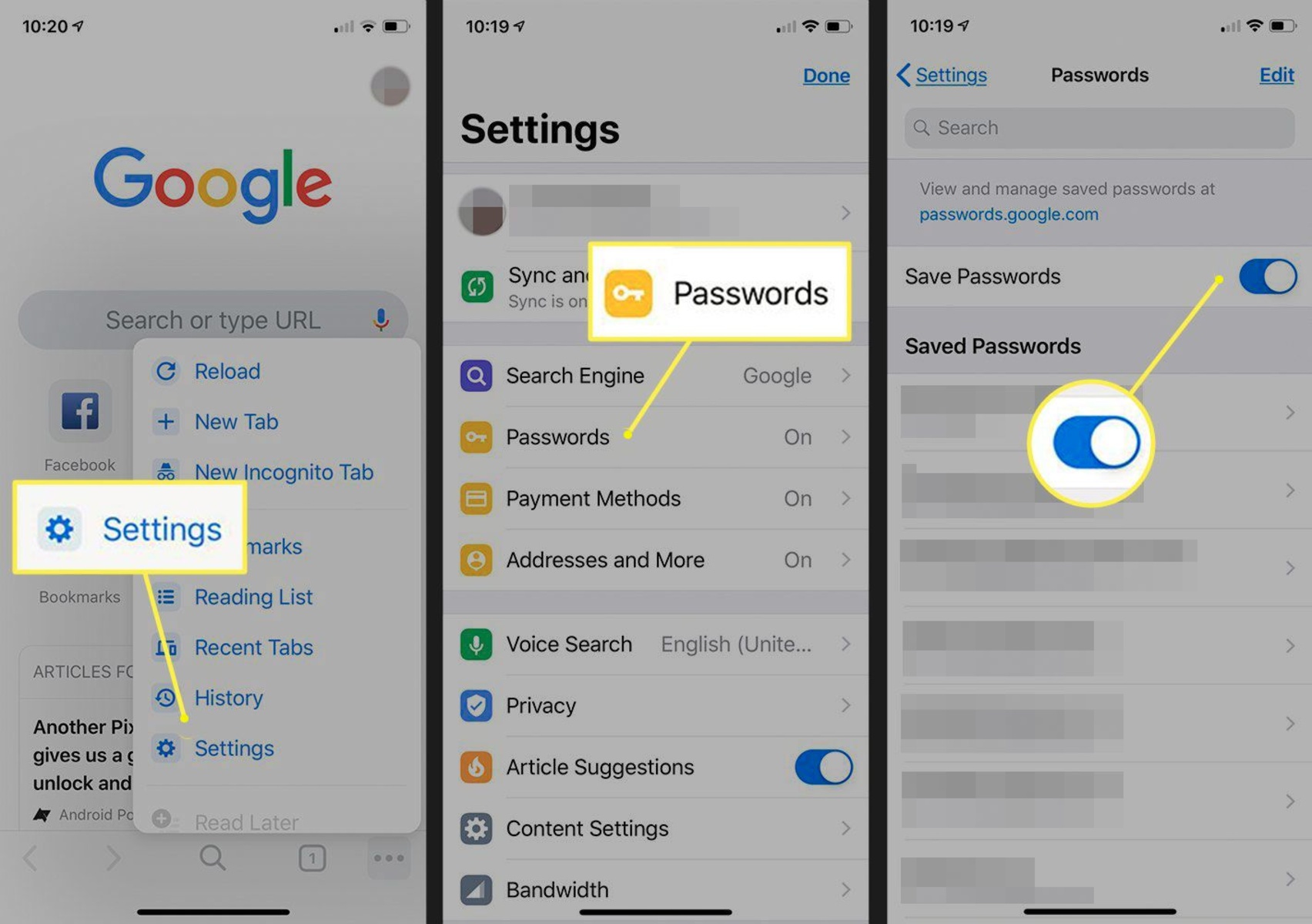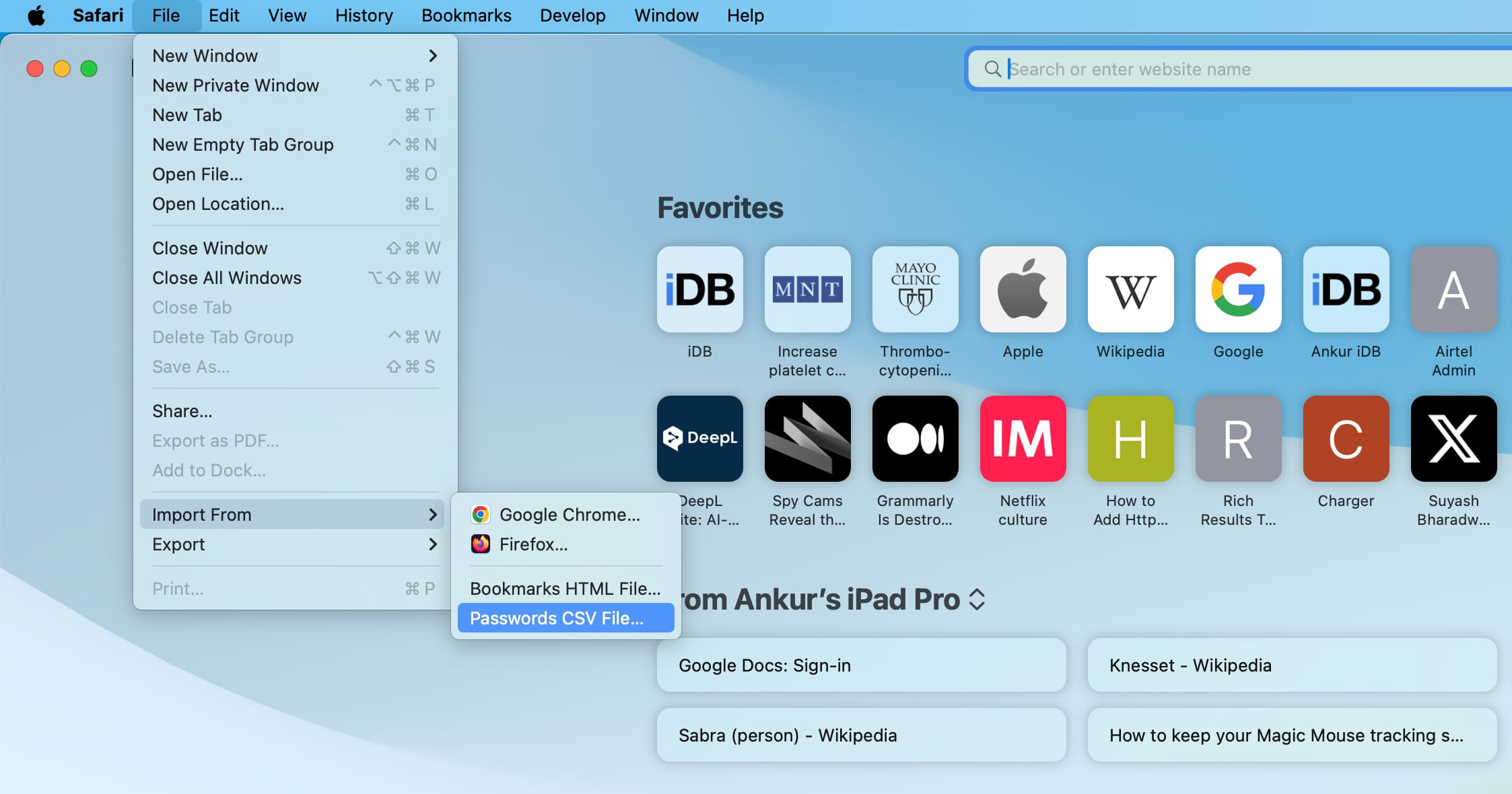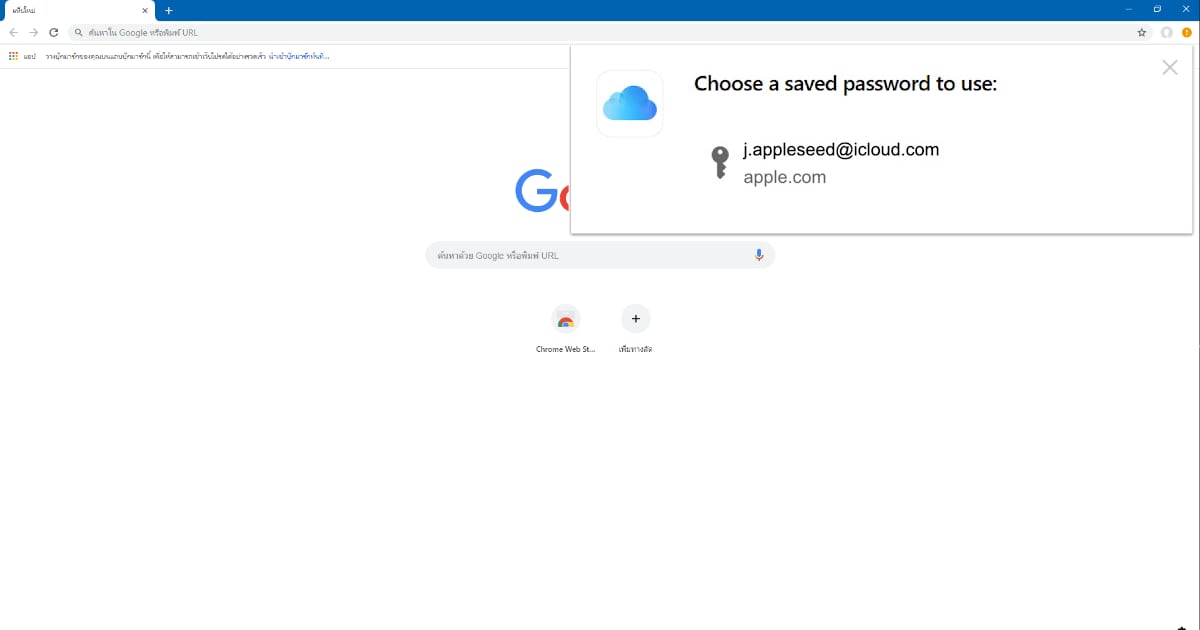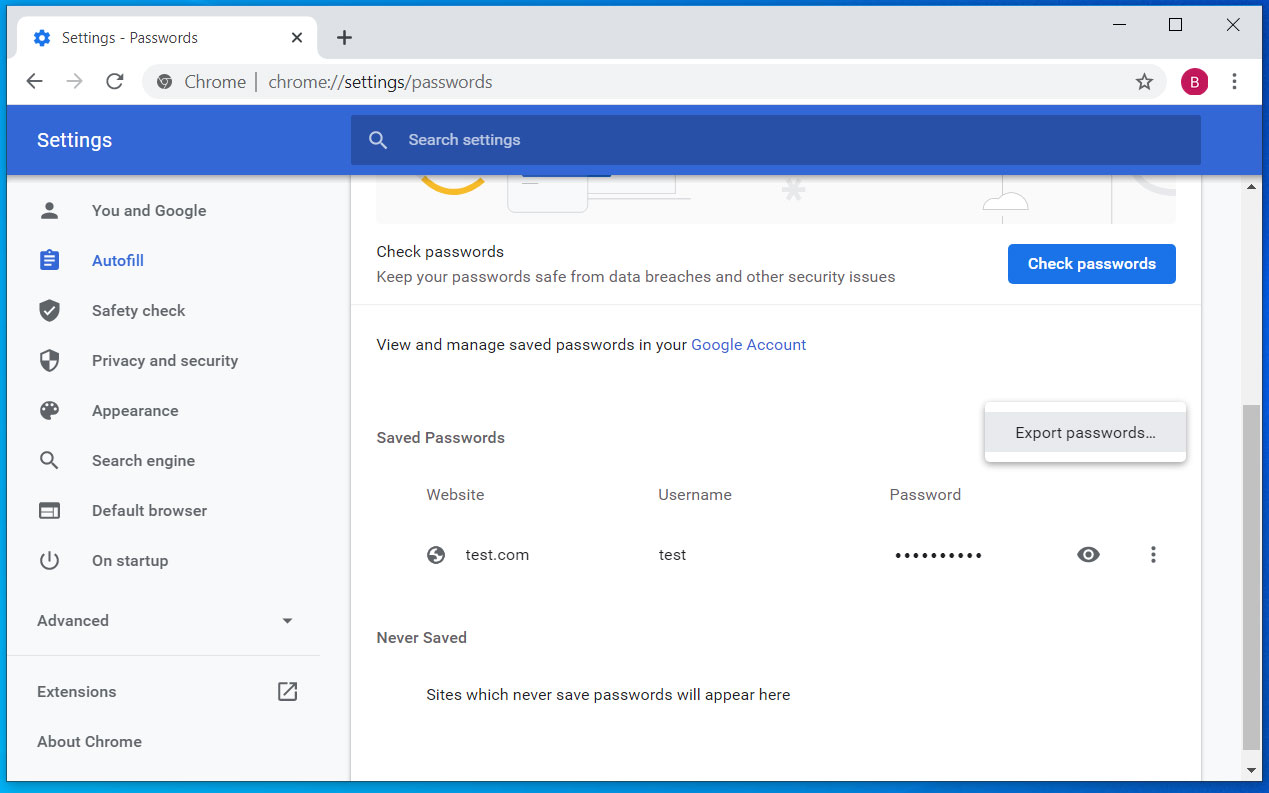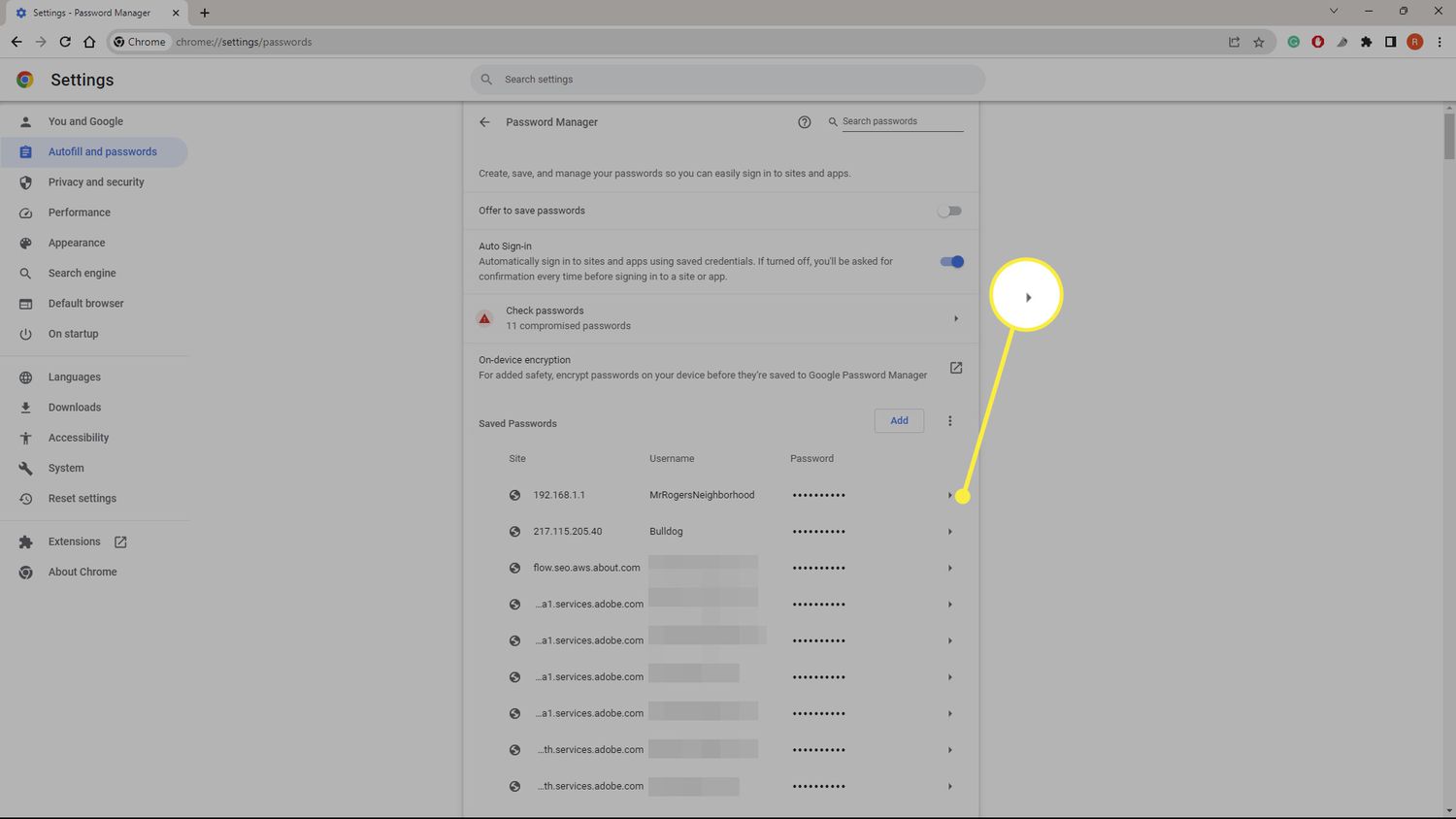Introduction
When it comes to browsing the web, security is paramount. Passwords act as the gatekeepers to our digital lives, safeguarding our sensitive information from prying eyes. As we navigate the vast online landscape, it's not uncommon to accumulate a plethora of passwords across various platforms and browsers. However, the thought of manually transferring these passwords to a new browser can be daunting. Fortunately, modern browsers like Chrome offer a seamless solution for importing passwords from other browsers, streamlining the transition process and ensuring that your valuable credentials remain secure.
In this guide, we will delve into the intricacies of importing passwords to Chrome, demystifying the process and empowering you to effortlessly consolidate your digital keys within this popular browser. Whether you're migrating from a different browser or simply seeking to centralize your password management, this step-by-step tutorial will equip you with the knowledge and confidence to securely import your passwords to Chrome.
So, if you're ready to simplify your browsing experience and fortify your online security, let's embark on this journey to seamlessly import your passwords to Chrome.
Step 1: Exporting Passwords from Another Browser
Before embarking on the process of importing passwords to Chrome, it's essential to first export the passwords from your current browser. This initial step ensures that your valuable credentials are securely transferred to Chrome, enabling a seamless transition without the risk of data loss. The method for exporting passwords may vary depending on the browser you are currently using. Below, we will explore the steps to export passwords from some of the most commonly used browsers.
Exporting Passwords from Mozilla Firefox
- Launch Mozilla Firefox and click on the three horizontal lines in the upper-right corner to access the menu.
- From the menu, select "Logins and Passwords."
- Within the "Logins and Passwords" section, click on the three vertical dots and choose "Export Logins."
- Firefox will prompt you to confirm the export. Once confirmed, select a secure location on your device to save the exported CSV file containing your passwords.
Exporting Passwords from Microsoft Edge
- Open Microsoft Edge and click on the three horizontal dots in the upper-right corner to open the menu.
- Navigate to "Settings" and select "Profiles" from the sidebar.
- Under the "Profiles" section, click on "Passwords."
- Next, click on the three horizontal dots and choose "Export passwords." You will be prompted to authenticate your identity using your device's security measures.
- After authentication, select a secure location to save the exported CSV file containing your passwords.
Exporting Passwords from Safari
- Launch Safari and click on "Safari" in the top menu bar.
- From the dropdown menu, select "Preferences."
- In the Preferences window, navigate to the "Passwords" tab.
- Within the "Passwords" tab, you can select the option to "Export Autofill Items" to save your passwords in a CSV file.
By following these steps, you can successfully export your passwords from various browsers, ensuring that they are ready for seamless importation into Chrome. With your passwords securely exported, you are now prepared to proceed to the next step of importing them into Chrome, consolidating your digital keys within this trusted browser.
Step 2: Importing Passwords to Chrome
With your passwords securely exported from your previous browser, the next step is to import them into Chrome. Chrome offers a user-friendly method to import passwords, ensuring a seamless transition and consolidation of your digital credentials within its secure environment. Let's delve into the step-by-step process of importing passwords to Chrome.
-
Launch Chrome: Begin by opening the Chrome browser on your computer. Ensure that you are signed in to your Google account to enable the synchronization of imported passwords across devices, providing convenient access to your credentials whenever and wherever you browse.
-
Access Chrome Settings: Click on the three vertical dots in the upper-right corner of the Chrome window to open the menu. From the dropdown menu, select "Settings" to access the browser's configuration options.
-
Navigate to Passwords: Within the Settings menu, scroll down and click on "Passwords" under the "Autofill" section. This will direct you to the Passwords settings, where you can manage your saved passwords and initiate the import process.
-
Import Passwords: In the Passwords settings, locate the "Saved Passwords" section, which displays a list of your existing saved passwords within Chrome. Click on the three vertical dots next to the "Saved Passwords" heading to reveal a dropdown menu.
-
Choose "Import": From the dropdown menu, select the "Import" option. Chrome will prompt you to select the previously exported CSV file containing your passwords. Navigate to the location where you saved the exported file from your previous browser and select it for importation.
-
Confirm Import: After selecting the CSV file, Chrome will display a confirmation dialog to ensure that you intend to import the passwords. Verify the import action, and Chrome will proceed to import the passwords from the selected file into your browser's saved passwords database.
-
Review Imported Passwords: Once the import process is complete, you can review the imported passwords within the "Saved Passwords" section. Chrome securely stores these passwords, encrypting them to maintain the integrity of your sensitive information.
By following these straightforward steps, you have successfully imported your passwords into Chrome, consolidating your digital keys within this trusted browser. With your passwords seamlessly integrated, you can navigate the web with confidence, knowing that your credentials are securely stored and easily accessible within Chrome's robust password management system.
Conclusion
In conclusion, the process of importing passwords to Chrome provides a seamless and secure transition, enabling users to consolidate their digital credentials within this trusted browser. By following the step-by-step guide outlined in this tutorial, you have gained the knowledge and confidence to effortlessly import your passwords, ensuring that your valuable credentials remain accessible and secure within Chrome's robust password management system.
Importing passwords to Chrome not only streamlines the browsing experience but also enhances security by centralizing password management within a trusted and widely used browser. With the ability to synchronize imported passwords across devices, Chrome empowers users to access their credentials conveniently, whether on a desktop, laptop, or mobile device. This synchronization feature adds a layer of convenience to the browsing experience, allowing seamless access to saved passwords across various platforms.
Furthermore, Chrome's commitment to security is evident in its encryption of saved passwords, ensuring that sensitive information remains protected from unauthorized access. The browser's robust encryption measures provide peace of mind, allowing users to navigate the web with confidence, knowing that their digital keys are safeguarded within Chrome's secure environment.
As the digital landscape continues to evolve, the importance of secure password management cannot be overstated. Importing passwords to Chrome represents a proactive step towards fortifying online security, enabling users to maintain control over their digital identities while simplifying the management of their credentials.
In essence, the process of importing passwords to Chrome transcends mere convenience; it embodies a commitment to security and efficiency in the digital realm. By consolidating your passwords within Chrome, you are not only streamlining your browsing experience but also fortifying your digital fortress with a trusted and reliable password management solution.
So, as you embark on your journey to import passwords to Chrome, remember that you are not just transferring digital keys; you are fortifying your online security and embracing a seamless browsing experience within a trusted browser. With your passwords securely imported into Chrome, you are poised to navigate the web with confidence, knowing that your digital credentials are safeguarded and easily accessible whenever and wherever you browse.









